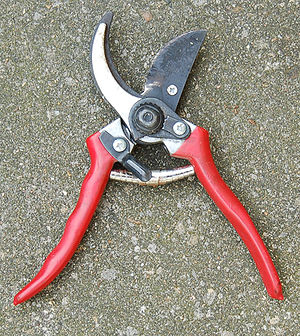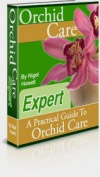Pruning your orchids for the first time can be a daunting prospect for the inexperienced grower, but it doesn’t have to be.
By following the simple steps below, you can benefit your plants in a big way, making them structurally stronger, easier to control in terms of size and shape, encourage blooming next season and revitalize old flowering branches.
There is a slight variance between different types of Orchid but as a general rule you should prune your plants as soon as all the flowers have died and the plant has ceased to bloom.
This should be done in the autumn when the stalk begins to yellow and dead branches can be easily seen and removed, if left later than this, it is very probable that it won’t flower next season.
When doing this you can either prune from about 3cm from where the blossom stalk originated on the mother plant, or you can completely remove the end of the blossom stalk, cutting it back to around 1 cm above a node; this is often said to be the most appropriate method for pruning Phalaenopsis or ‘Moth’ Orchids but should not be used on Dendrobiums that flower from leafless canes – cutting the spent cane off this plant will cause it not to re-bloom.
It is also possible to prune your Orchid whilst the stalk is still green although this will potentially result in the loss of blossom.
For Cymbidium (‘Boat’), Dendrobium and other Orchids, you should gently lift the plant from its container and check the roots.
Healthy roots can be identified by their agility and will have a grey-green film. Unhealthy roots will be brown and brittle or spongy, and these will need to be removed before re-potting in fine-grade fir bark and watered. Phalaenopsis however, may be cut right down and produce a new spike next season, even from a seemingly worn-out cane.
New Growth
You may find, occasionally, – although this is in no way guaranteed – that after pruning your Phalaenopsis (Moth) Orchids, old blossom stalks will produce spikes from their nodes or even generate small baby plants known as ‘Keikis’ or ‘Pups’.
These baby plants are genetically identical to the mother plant and may eventually be removed it and be re-potted on their own. This should be done after they develop roots that are around 6cm long – strong enough to support the new plant.
Using the right tools for the job
When pruning, you should also take care to ensure that you use the right tools, sharp secateurs are perfect for the job, although a sharp knife or one-sided razor blade will do.
You should also make sure that you disinfect the blades thoroughly, and, if you are working with more than one plant, only work on one at a time, continually disinfecting your blades in between each one. This will help prevent the spreading of any diseases, and maintain the general health of your Orchids.
Obviously, there are thousands of different varieties of Orchid, and if you are in any way unsure about maintaining the health of your plant you should always seek expert advice from your local garden centre.




